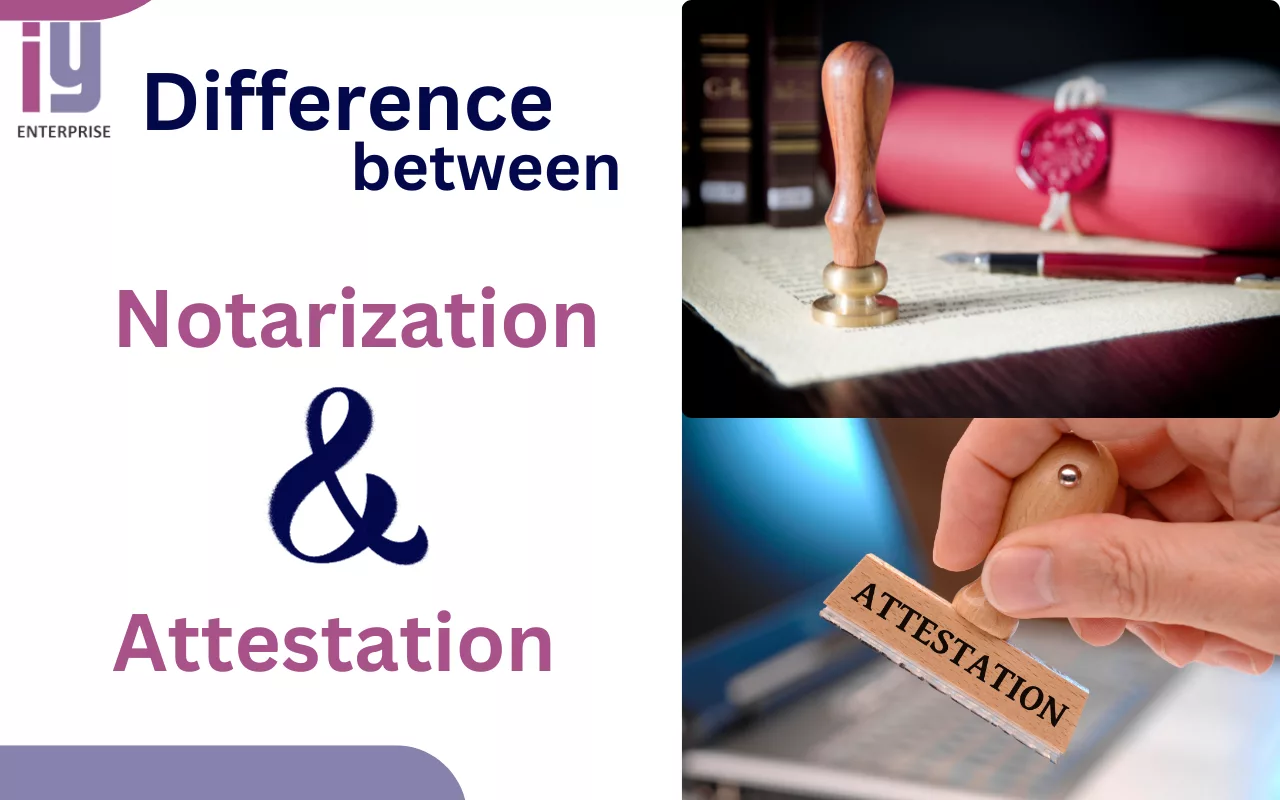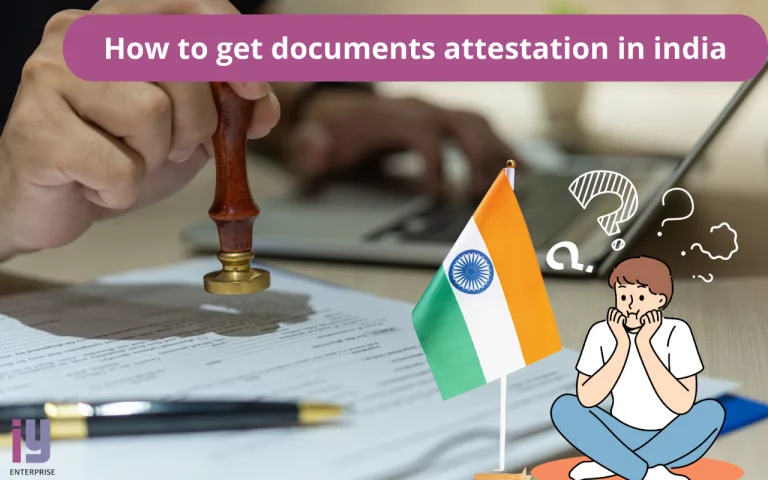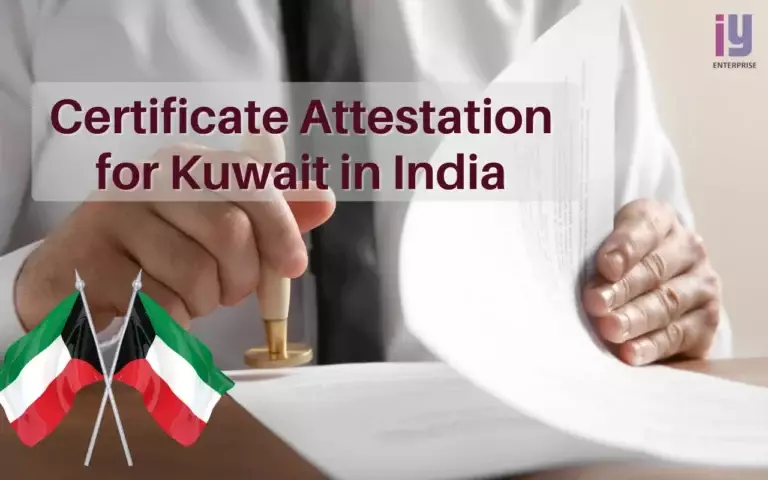What’s The Difference Between a Notarization and Attestation?
Table of Contents
Legal and official documents play a pivotal role in various aspects of our lives, from property transactions to international travel. Ensuring the authenticity of these documents is crucial, and that’s where processes like notarization and attestation come into play. In this blog post, we’ll unravel the differences between notarization and attestation, shedding light on their roles and importance in the world of documentation.
Why Notarization and Attestation Matter
Notarization and attestation serve as powerful safeguards, guaranteeing the legitimacy of documents. Whether it’s a contract, educational certificate, or marriage document, these processes instill confidence in all parties involved – the document issuers, recipients, and relevant authorities. Understanding their significance is essential, especially for individuals engaged in legal paperwork or international endeavors.
Notarization: A Quick Insight
What is Notarization?
– Definition of notarization
Notarization is the official process of verifying a person’s identity and signature on a document. A notary public is a government-commissioned official who witnesses the signing of a document and then affixes their signature and seal. This process helps to prevent fraud and ensure that documents are legally binding.
Role of a notary public
Here are some of the key roles of a notary public:
- Verify the identity of the signers: Notaries must verify the identity of the signers by examining their identification documents, such as a driver’s license or passport.
- Witness the signing of documents: Notaries must witness the signers signing the documents in person.
- Complete the notarial certificate: Notaries must complete the notarial certificate, which is a statement that they have verified the identity of the signers and witnessed them signing the documents.
- Keep a record of notarizations: Notaries must keep a record of all notarizations they perform.
The process of notarization
The process of notarization can be broken down into the following steps:
- The signer appears before the notary public. The signer must be physically present with the notary public in order for the document to be notarized.
- The notary public verifies the signer’s identity. The notary public will ask the signer to present a valid form of identification, such as a driver’s license or passport. The notary public may also ask the signer to sign their name in front of them.
- The notary public witnesses the signer signing the document. The signer must sign the document in the presence of the notary public.
- The notary public completes the notarial certificate. The notarial certificate is a statement that the notary public has verified the signer’s identity and witnessed them signing the document. The notarial certificate also includes the notary public’s signature and seal.
- The notary public affixes their seal to the document. The notary public’s seal is a unique stamp that verifies that the document has been notarized.
Once the notarization process is complete, the document is considered to be legally binding and can be used in official transactions.
Note: In some states, remote online notarization (RON) is now allowed. With RON, the signer and notary public can meet online over a video call. The notary public can then verify the signer’s identity and witness them signing the document electronically.
Here are some additional tips for getting a document notarized:
- Make sure to bring a valid form of identification with you.
- Review the document carefully before signing it.
- Ask the notary public any questions you have about the notarization process.
- Keep a copy of the notarized document for your records.
Types of documents that require notarization
Notarization is required for a variety of documents, including:
- Real estate documents: Deeds, mortgages, and other real estate documents often require notarization to protect the parties involved and to prevent fraud.
- Legal documents: Wills, trusts, powers of attorney, and other legal documents may also require notarization to ensure that they are legally binding.
- Business documents: Certain business contracts, such as commercial leases and non-disclosure agreements, may also require notarization.
- Financial documents: Loan agreements, investment documents, and other financial documents may also require notarization.
- Government documents: Some government forms, such as passport applications and travel visas, may also require notarization.
It is important to note that the specific requirements for notarization vary from state to state. If you are unsure whether a document requires notarization, you should consult with a notary public.
Attestation: Simplified
What is Attestation?
Attestation is the process of verifying the authenticity of a document or certificate. It is a formal declaration by a witness that an act was performed in his or her presence in accordance with legal guidelines. Attestation is often used to verify the authenticity of educational certificates, professional qualifications, and personal documents.
Role of an Attesting Officer
An attesting officer is a person who is authorized to verify the authenticity of documents and certificates. Attesting officers may be government officials, such as magistrates or notaries public, or they may be representatives of professional organizations or educational institutions.
The Process of Attestation
The process of attestation typically involves the following steps:
- The person whose document needs to be attested presents the document to the attesting officer.
- The attesting officer verifies the authenticity of the document by comparing it to the original document or by checking it against a database of verified documents.
- The attesting officer signs and stamps the document to indicate that it has been attested.
Types of Documents That Require Attestation
Some common types of documents that require attestation include:
- Educational certificates
- Professional qualifications
- Personal documents, such as birth certificates, marriage certificates, and death certificates
- Business documents, such as contracts and invoices
- Legal documents, such as affidavits and wills
Key Differences Between Notarization and Attestation
The following table summarizes the key differences between notarization and attestation:
| Characteristic | Notarization | Attestation |
| Legal implications | Verifies the identity of the signer and the authenticity of their signature. | Verifies the authenticity of the document and the identity of the attesting officer. |
| Variations in processes and requirements | Process and requirements vary by state or country. | Process and requirements may vary depending on the type of document being attested. |
| Differences in the types of documents applicable | Commonly used for legal and business documents. | Commonly used for educational certificates, professional qualifications, and personal documents. |
When and Where is Notarization Required?
Notarization is required in a variety of situations, such as:
- When signing a mortgage or other loan agreement
- When transferring real estate
- When creating a will or trust
- When signing a power of attorney
- When signing certain business contracts
Notary services are typically available at banks, law offices, and shipping stores.
When and Where is Attestation Required?
Attestation is required in a variety of situations, such as:
- When applying for a job or visa in a foreign country
- When enrolling in a foreign educational institution
- When submitting documents to a government agency
- When submitting documents to a professional organization
Attestation services are typically available at government offices, educational institutions, and professional organizations.
Comparing the Processes
The following table provides a step-by-step comparison of notarization and attestation processes:
| Step | Notarization | Attestation |
| 1 | Appear before a notary public. | Present the document to the attesting officer. |
| 2 | Show a valid form of identification to the notary public. | Provide the attesting officer with any necessary information to verify the authenticity of the document. |
| 3 | Sign the document in the presence of the notary public. | The attesting officer will sign and stamp the document. |
| 4 | The notary public will affix their seal to the document. | The attested document will be returned to you. |
It is also important to note that some documents may require both notarization and attestation. For example, a document that needs to be used in a foreign country may need to be notarized before it is authenticated by a foreign embassy or consulate.







